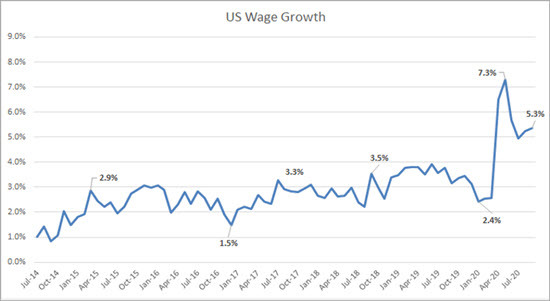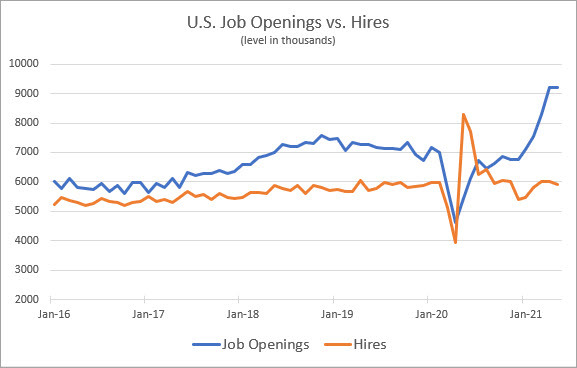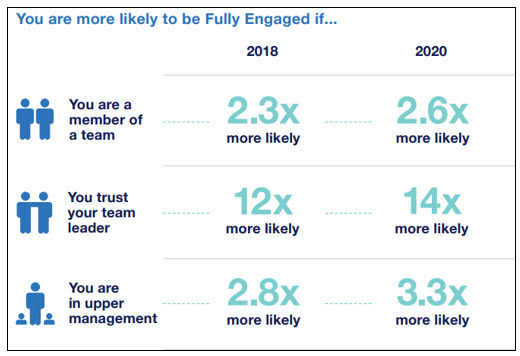The Workforce Evolution Continues in 2021

Never has the United States seen a year, nor a labor market, quite like that of 2020. And 2021 is continuing upon the COVID-19-induced labor market trends; employers must evolve with this new normal.
At the start of 2020, talent shortages, high turnover rates, and low unemployment rates were critical topics of conversations among talent acquisition teams everywhere. After many years of strong employment growth rates, January 2020 labor data showed the significant gap between workers needed and workers hired, with a national fill rate of 84% - meaning for every 100 job openings, only 84 hires were made. Contributing to the talent shortages were declining labor force participation rates and the large number of workers from the Baby Boomer generation retiring daily.
Voluntary turnover plagued organizations, as social media and the continual access to job opportunities allowed quick and plentiful options for new employment. Despite the challenges, wage growth in January was 2.4%, a dip from 2019 figures as high as 3.9%. In order to remain competitive, employer brand and employer value proposition (EVP) were in the forefront of talent acquisition and retention strategies.

SOURCE: ADP RESEARCH INSTITUTE, graph by Ellen Gregory
In March 2020, the unprecedented employment growth record finally ended after 113 months as the effects of the COVID-19 global health event abruptly weakened the labor market and affected many organizations' ability to operate. By April, the US had lost a record 20.8M jobs due to the widespread shut down – the largest single month loss of jobs in history. Of this decline, the ADP Research Institute® (ADPRI) found 10-11 million of these workers were temporarily laid off. This recession job loss anomaly was not the only unique labor market impact due to the pandemic. ADPRI Head of Labor Market Research, Ahu Yildirmaz, noted, "From industry distribution to business size to worker demographics, this downturn is different than any other in modern U.S. history."
Workers earning less than $15/hour saw the largest employment decline at 35%, compared to 9% decline amongst those earning more than $32/hour. Unique to this recession as well, women, younger workers (21 to 30 years), and workers over 60 saw greater rates of employment decline than their respective counterparts.
In response to this unprecedented time, Congress introduced and passed the CARES Act to address the widespread consequences of the COVID-19, including federal unemployment assistance and stimulus checks. The circumstances created by the pandemic affected employees' willingness to return to work, and put pressure on employers to entice workers through wages. Labor force participation rates had dropped to 60.2% in April – the lowest seen since 1973. These low rates have continued through 2021 with labor force participation rates holding steady at 61.6% in June 2021.

SOURCE: DOL BUREAU OF LABOR STATISTICS, graphic by Ellen Gregory
The hesitations or unwillingness to return to work continued into 2021, with Department of Labor data showing that 1.8M workers are on temporary layoff and may not be actively searching for new job opportunities.
A myriad of other factors also reduced the quantity of active job seekers: virtual schooling and family reasons, fear of lack of COVID-19 safety in the workplace, and unemployment compensation in many states that were greater than average wages. These all have added to the pre-pandemic shortages due to aging population, as millions of Boomers retire annually – a rate that has accelerated during the pandemic – and not enough younger workers to backfill their jobs.
The national fill rate in May 2020 declined dramatically to 64%, down from the 84% pre-pandemic levels. Attraction and retention of employees during this labor shortage is continuing to drive 2021 trends.
This talent shortage amidst a pandemic has challenged employers to address new worker demands, in addition to previously desired organizational qualities pre-pandemic. Employees today are in search of:
- A safety and wellbeing, both from COVID as well as mental health resources
- culturally supported and technologically enable remote work options,
- competitive wages,
- flexible schedules to handle newer personal responsibilities, as well as
- clear communications of these offerings
… all before even considering a new job.
These unique labor market considerations continue to propel these new trends and they are expected to continue throughout 2021 and beyond. Remote work, or some combination of office based and virtual work, will be expected by employees. Research shows that more than 80% of the population wants to work remotely at least one day a week or more. 34% of women want to work completely virtually. A trend that could further set back the fight for workplace gender equality if employers are not flexible on their remote work policies.
The good news is, ADPRI demonstrated that during COVID-19, 20% of virtual workers are fully engaged compared only 10% of office-based workers. Wage growth will continue while talent shortages are present, and any additional federal stimulus or unemployment assistance should be monitored for potential impacts.

SOURCE: ADP RESEARCH INSTITUTE, GLOBAL WORKPLACE STUDY 2020
Engaging workers in this new normal will require companies to grow their presence and culture outside of a physical office setting. ADPRI shows that that trust in leaders is key for engaging employees. In fact, those who trust their leaders are 14 times more likely to be fully engaged. Additionally, employees want to feel a part of a team, those who do are 2.6 times more likely to be fully engaged.
The challenges of hiring shortages before COVID-19 have started to re-emerge, only now they have been compounded by pandemic-related factors. 2021 talent strategies will have to encompass all of these considerations.
Keep up with workforce trends
Subscribe to recieve both the ADP National Employment Report® and the ADP Workforce Vitality Report which are published monthly by the ADP Research Institute®.
Other articles in this series
- Trends in HCM Tech for 2021: How Will HCM Technology Continue to Evolve?
- Diversity, Equity, and Inclusion in the Workplace — Trends for 2021
- Buckle Up for 2021: 4 Compliance Trends to Watch
- Prioritizing People Analytics: Six HR-Driven Data Trends for 2021
- Evolving Work Trends in 2021: Engagement as the Proactive Path Forward



